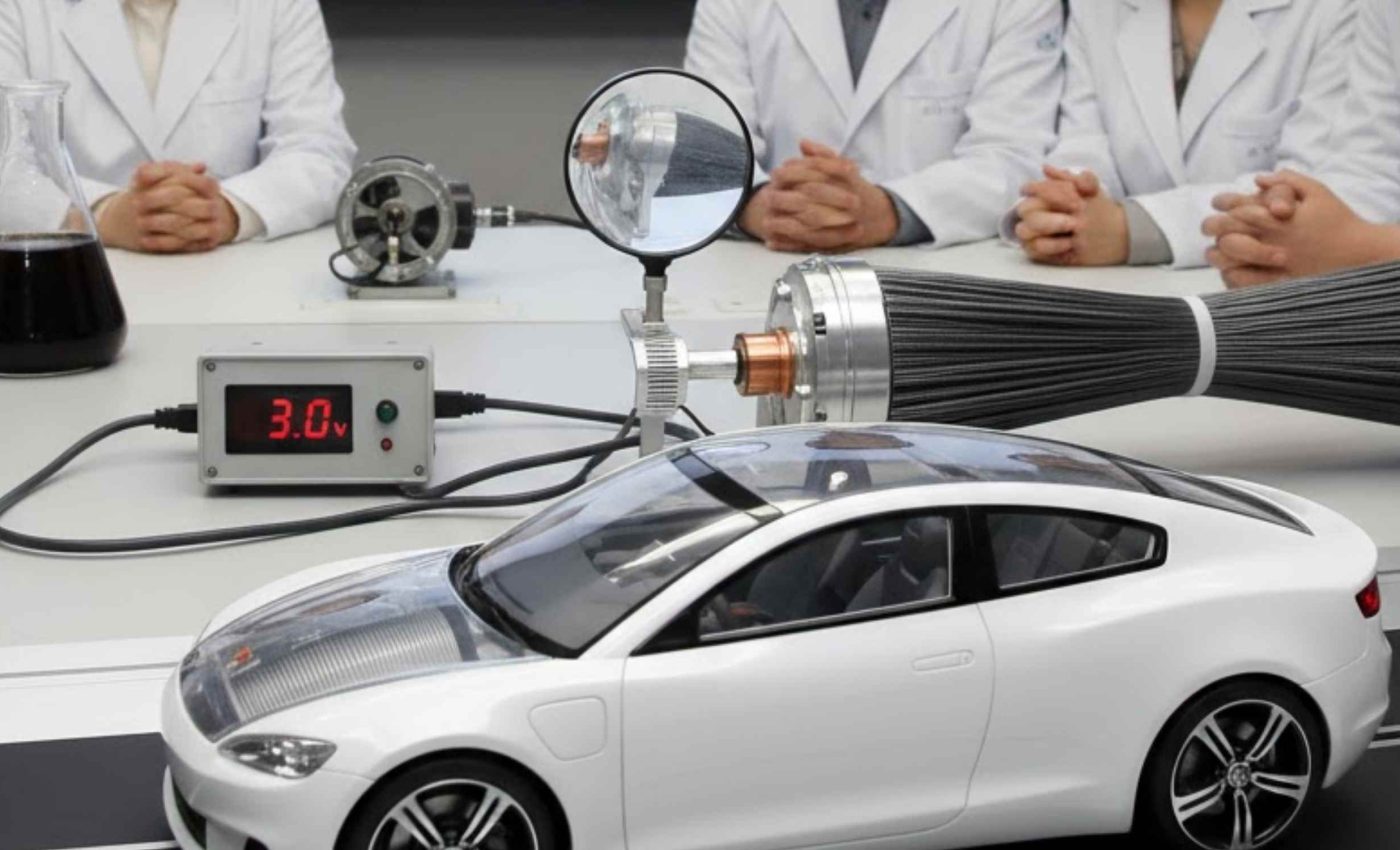
Goodbye to copper: Korean scientists invent an electric motor with carbon nanotubes
Korean researchers built a small electric motor that uses cables made entirely of carbon nanotubes, rolled graphene cylinders a few nanometers wide. The motor runs without copper wire, trimming weight while keeping useful speed at low voltage.
The team’s result points toward lighter wiring for cars and planes. It also suggests a path to cut manufacturing emissions by replacing heavy metals with precise carbon structures.
A lighter path to spinning power
Lead researcher Ki-Hyun Ryu of the Korea Institute of Science and Technology (KIST) led the project. The group describes cables that combine aligned nanotube wires with a thin insulating jacket.
The researchers used a process called lyotropic liquid crystal, a fluid phase where rodlike molecules align, to organize the nanotubes. That alignment lets many tiny conductors act more like one continuous wire.
“We successfully powered a scale model car using a metal-free motor made from high-performance CSCECs,” stated Ryu.
The demonstration motor operated on 3 volts and maintained steady rotation. It pushed a toy car along a short track, showing that the concept works outside the lab.
How the new cables are built
Each cable has a core-sheath composite, a conductive core with an insulating wrap. The core is a bundle of continuous nanotube wires about 11.8 inches long in the prototype.
A surface-cleaning step improves the wire. The team uses chlorosulfonic acid, a powerful acid that dissolves nanotube bundles, then removes residual metals that can block electrons.
The texturing step is called LAST, a controlled surface process that boosts order. Cleaner surfaces and better alignment reduce the points where electrons scatter.
Those changes raise the effective electrical conductivity. The cable’s conductivity reached 7.7 million siemens per meter in testing.
What the tests show
At 3 volts, the carbon motor reached 3,420 revolutions per minute. A similar copper coil reached 18,120 revolutions per minute at the same voltage, but it weighed much more.
Copper’s typical conductivity is about 5.9×10^7 siemens per meter. That helps explain copper’s higher speed today.
Weight tells another story. Nanotube wire is roughly one fifth as dense as copper, which means big mass savings in coils and harnesses. Specific performance, speed per unit mass, narrows the gap.
The prototype’s cables stayed stable for at least one hour at power levels up to 3.5 watts. That endurance matters for moving from tabletop tests to real devices.
Where the limits appear
The step from ideal nanotubes to bulk fibers brings junction resistance, extra resistance where filaments touch. Those junctions lower macroscopic conductivity compared with single tubes.
Individual nanotubes can tolerate enormous current density, electric current per unit area, up to about 10^9 amperes per square centimeter in experiments. Bundling thousands together without losing that strength remains a key challenge.
Cost and scale also matter. Spinning long, uniform fibers with low impurities is difficult, and processing routes can be energy intensive.
Even with those hurdles, steady gains in alignment and purity are lifting performance. The latest results show a clean route to improve output without adding metal.
What it could mean for electric vehicles
Wiring is a quiet energy drain in modern cars, especially battery models that carry heavy harnesses, bundled cable sets that link major systems. Replacing metal with lighter conductors can extend range and free space.
Using recycled metals already cuts manufacturing emissions significantly. One industry report found that replacing virgin copper with regenerated material in wiring harnesses can reduce CO2 output by up to 72 percent without sacrificing performance.
Nanotube cables could push that further by reducing weight at the source. Less mass means less energy to move the vehicle, especially in stop and go traffic.
Safety rules and connector standards will need updates if new conductors enter production. The geometry and thermal behavior of coils may change as metals give way to carbon structures.
The sustainability question
A fair question is what happens at the end of life. Recent work shows that nanotube sheets can be recycled and re-spunned with little loss of properties.
That approach preserves alignment and conductivity after recovery. It points to a circular pathway for high performance carbon conductors.
Processing chemistry also deserves care. The same solvents that unlock dispersion must be recovered and neutralized responsibly.
Clear rules and closed loop systems will be needed if production scales up. The materials community is already testing those controls.
Why the science matters
The motor’s heart is the orderly flow of electrons through a network. Better order reduces scattering, random deflections that waste electrical energy.
Alignment lets more of the current travel straight along the wire axis. That lowers voltage drop and heat for the same power.
The work also shows the value of careful surface control. Removing catalyst particles reduces defect sites that can trap charge or start failures.
Those improvements add up to a cable that punches above its raw conductivity number. The cable’s low density makes every watt go further per unit weight.
What comes next
Beyond motors, nanotube conductors already help batteries. They act as conductive additives, tiny agents that connect active particles, improving charge flow in electrodes.
Future steps include thicker coils, better heat paths, and optimized insulating jackets. Each helps translate lab gains into durable parts.
Automakers will ask about crash safety, repair, and diagnostics. Those questions are solvable with smart design and testing.
If engineers can keep raising conductivity while holding down cost, copper free coils could find their niche. The first working motor is a practical signpost.
The study is published in Advanced Composites and Hybrid Materials.
—–
Like what you read? Subscribe to our newsletter for engaging articles, exclusive content, and the latest updates.
Check us out on EarthSnap, a free app brought to you by Eric Ralls and Earth.com.
—–













